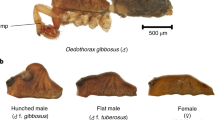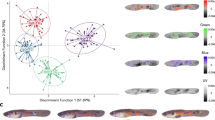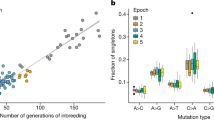Abstract
THE Syrian hamster, Mesocricetus auratus, introduced to the laboratory by Adler and Theodor1 in 1931, is a golden-brown rodent with pale cream belly fur and two characteristic throat flashes. Melanic pigment darkens the skin of the ears and is present about the genitals in both sexes (in the region of the vulva and anus in females, and in the scrotum and spots on the prepuce in males). It is to be expected, as increasing numbers of hamsters are bred, that mutant types will appear. This note records the occurrence of two new mutations.
This is a preview of subscription content, access via your institution
Access options
Subscribe to this journal
Receive 51 print issues and online access
$199.00 per year
only $3.90 per issue
Buy this article
- Purchase on Springer Link
- Instant access to full article PDF
Prices may be subject to local taxes which are calculated during checkout
Similar content being viewed by others
References
Adler, S., and Theodor, O., Proc. Roy. Soc., B, 108, 447 (1931).
Author information
Authors and Affiliations
Rights and permissions
About this article
Cite this article
ROBINSON, R. Two New Mutations in the Syrian Hamster. Nature 176, 353–354 (1955). https://doi.org/10.1038/176353b0
Issue Date:
DOI: https://doi.org/10.1038/176353b0
This article is cited by
-
Occurrence of a Brown Mutation in the Syrian Hamster
Nature (1960)
-
Genetic Independence of Four Mutants in the Syrian Hamster
Nature (1959)
-
Mosaicism in mammals
Genetica (1959)
-
Genetic studies of the Syrian hamster I. The mutant genes cream, ruby-eye and piebald
Journal of Genetics (1958)
-
Partial Albinism in the Syrian Hamster
Nature (1957)
Comments
By submitting a comment you agree to abide by our Terms and Community Guidelines. If you find something abusive or that does not comply with our terms or guidelines please flag it as inappropriate.



